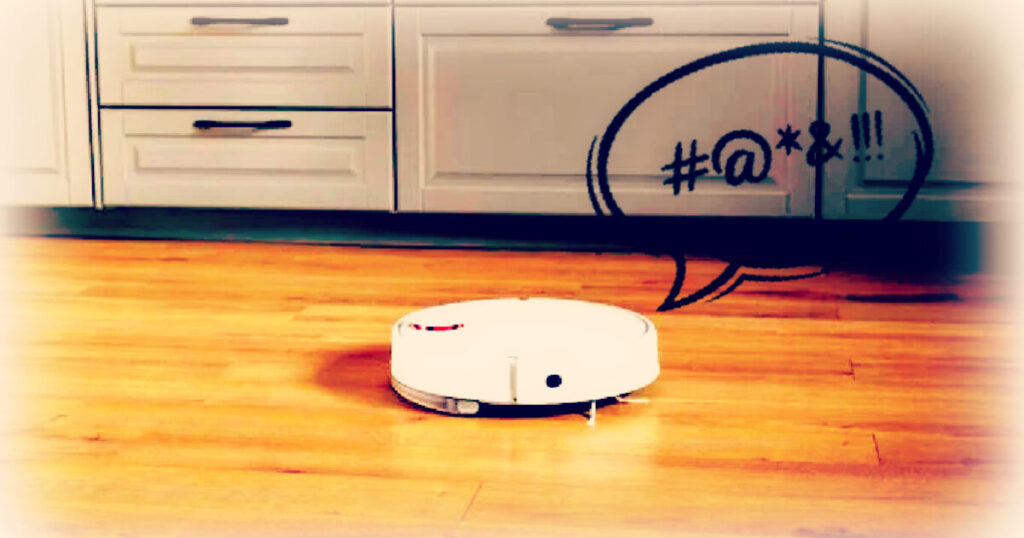In the modern technological landscape, the integration of devices into the so-called ‘internet of things’ has brought about significant conveniences but has also raised serious concerns regarding security and privacy. One instance highlighting this dangerous intersection is the recent report involving Ecovacs, a manufacturer of robot vacuum cleaners. Several owners in the United States encountered bizarre and offensive behavior from their devices, which were unexpectedly commandeered by outside intruders. These hackers employed the vacuums’ onboard speakers to unleash an array of expletives—demonstrating an alarming vulnerability in the company’s software that was seemingly overlooked or inadequately addressed.
In many of the reported cases, owners of Ecovacs vacuums found themselves confronted with strange audio outputs from their devices. A notable account from Daniel Swenson describes his experience of hearing distorted sounds that initially suggested a malfunction. Upon investigation, he discovered that someone outside of his control was accessing the vacuum’s live camera feed, taking over its functions. This culminated in a shocking event where a voice echoed through the vacuum, incessantly shouting racial slurs in front of his family, including his young son. The incident was chilling, not only due to the hateful language but also in terms of a fundamental violation of their private space. Interestingly, Swenson reframed his perception of the situation as a lucky escape from more sinister possibilities, referencing an earlier scandal where a Roomba snapped photos of a woman in her bathroom, which later circulated online.
This kind of intrusion is not an isolated incident; rather, it illustrates the broader issues associated with smart home devices. The most concerning aspect is the potential for third parties to gain unauthorized access and utilize these devices not for malicious intents but for mere amusement or provocation. Examples abound, from intruders manipulating baby monitors to disrupt families’ sleep with nightmarish whispers to hackers gaining control over garage doors for petty mischief. Although some might argue that the intrusions rarely escalated beyond pranking, it is worrisome to consider how often such incidents occur undetected, sparking fears about safety and privacy in what should be secure personal spaces.
The responsibility of ensuring the security of these devices lies significantly with the manufacturers, yet many companies, including those that produce connected hardware, often overlook adequate safety measures. Consumers frequently prioritize cost over security, creating a market that favors cheaper unprotected products with minimal safeguards in place. This trend reveals a troubling disregard by manufacturers for consumers’ privacy and safety; they often fail to invest in the robust security features that would protect users from potential abuse. This lack of practice not only endangers users but also undermines the very concept of a smart, safe home.
Ecovacs, for example, marketed their smart devices with certain protections in mind, like password-protected accounts and an additional four-digit PIN for video feed access. However, the security measures were fundamentally flawed, as the PIN code validation was not secured server-side. This meant that, with basic technical knowledge, anyone could easily bypass these measures and exploit the device’s functionalities. There are concerns that users, like Swenson, could have fallen victim to compounded vulnerability, potentially with reused credentials from other services. Even with the knowledge of these issues, companies often fail to implement straightforward security practices that would mitigate risks significantly.
In response to these alarming incidents, Ecovacs has pledged to implement a substantial security update in an effort to protect users from further breaches. However, many questions remain about how seriously manufacturers can take their responsibilities in securing connected technologies. As smart devices become ubiquitous in households, the onus is on both consumers and manufacturers to enhance awareness of security protocols and advocate for stronger protections. Building consumer oversight can also be instrumental in demanding better security measures and ensuring that tech companies prioritize user safety over profit. Overall, maintaining privacy and safety in this ever-evolving technological landscape necessitates a cohesive effort between consumers and manufacturers.

